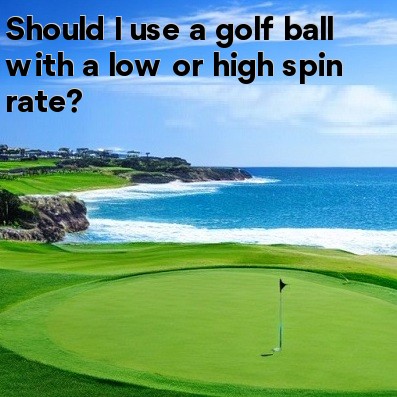
In Golf, Should I Use a Golf Ball with a Low or High Spin Rate?
If you are an avid golfer, you probably understand the importance of the golf ball when it comes to your overall performance on the course. One important aspect to consider is the spin rate of the golf ball. The spin rate refers to the amount of backspin or sidespin the ball generates when it is struck by the club.
So, should you use a golf ball with a low or high spin rate? Let's explore the pros and cons of each:
Low Spin Rate
A golf ball with a low spin rate is known to minimize the amount of sidespin and backspin it generates upon impact. This can be beneficial in certain situations:
- Straighter Drives: Low spin rate balls usually result in straighter drives as there is less sidespin to cause the ball to curve in the air.
- Longer Distance: With less backspin, the ball tends to launch higher and travel farther, which can help you gain some extra distance off the tee.
- Roll: Low spin rate balls tend to roll more upon landing, which can be advantageous in dry and firm course conditions.
On the other hand, there are some drawbacks to using a golf ball with a low spin rate:
- Lack of Control: The reduced spin can make it challenging to stop the ball on the greens, especially when hitting approach shots or shots around the green.
- Difficulty with Control Shots: Shots that require precision and control, such as shaping shots or hitting high-spinning shots, can be more challenging with a low spin rate ball.
High Spin Rate
A golf ball with a high spin rate is designed to generate more sidespin and backspin. Here are some advantages of using a ball with a high spin rate:
- Control: High spin rate balls allow you to have better control over the ball, making it easier to stop on the greens and execute shots that require precision.
- Short Game Performance: The increased spin can be beneficial for shots around the green, allowing you to better control the trajectory and spin of the ball.
- Flight Manipulation: High spin rate balls enable you to shape shots more easily, allowing you to work the ball left or right as needed.
However, there are some disadvantages to using a golf ball with a high spin rate:
- Loss of Distance: The additional backspin can cause the ball to balloon in the air, resulting in shorter overall distances.
- Straightness: The increased sidespin can make it more challenging to keep the ball straight off the tee, potentially resulting in more hooks or slices.
- Less Roll: High spin rate balls tend to have less roll upon landing, which may not be ideal in wet or soft course conditions.
In conclusion, the choice between a golf ball with a low or high spin rate depends on your individual playing style and the specific conditions of the golf course. If you prioritize distance and straighter drives, a low spin rate ball may be the better option. However, if control, spin, and shaping shots are more important to you, a high spin rate ball may suit you better. It is also worth experimenting with different golf balls to see which one aligns with your playing preferences.





